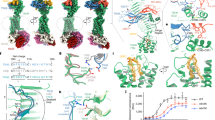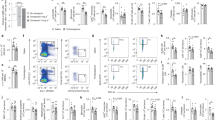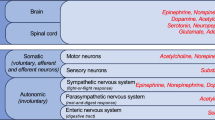Abstract
ADENYLATE cyclase (EC 4.6.1.1.) is a bifunctional enzyme that responds to biological signals such as hormones as well as catalysing the synthesis of cyclic 3′,5′-AMP. Several reports indicate that the hormonal responsiveness of this enzyme in transformed or neoplastic cells is altered1–3. This may explain the low cyclic AMP levels that have been associated with the unregulated cellular proliferation seen in transformed cells4–6. There is also evidence to implicate cyclic AMP in normal lymphocyte activation7,8. Comparison of circulating lymphocytes from chronic lymphocytic leukaemia (CLL) patients with those from normal human controls indicates that cyclic AMP levels9,10, cyclic nucleotide phosphodiesterase11,12 and adenylate cyclase13 activities are changed in the CLL lymphocyte. The membrane enzyme activity of 5′ nucleotidase14 as well as complement15, antigen16 and lectin17 binding are also altered in the CLL plasma membrane. The observation that catecholamine hormone (β-adrenergic) responsiveness is depressed in CLL lymphocytes is further evidence for a functionally altered plasma membrane13. Until now, it has not been possible to identify the molecular lesion responsible for the reduced catecholamine sensitivity. But, with the availability18–20 of radiolabelled molecules that bind efficiently and directly to specific β-adrenergic hormone receptor sites (for example (—) 3H-dihydroalprenolol), we can now determine whether the CLL adenylate cyclase defect occurs in the β-adrenergic hormone-receptor complex, in the transducing mechanism that couples the receptor to the catalytic component, or in the intrinsic catalytic mechanism. We show here that the number of β-adrenergic hormone receptor sites is reduced on CLL lymphocyte membranes while the catalytic capacity of the cyclase enzyme is normal. The low density of catecholamine hormone receptors could account for the altered cyclic AMP metabolism and may contribute to the unregulated growth of CLL lymphocytes.
This is a preview of subscription content, access via your institution
Access options
Subscribe to this journal
Receive 51 print issues and online access
$199.00 per year
only $3.90 per issue
Buy this article
- Purchase on Springer Link
- Instant access to full article PDF
Prices may be subject to local taxes which are calculated during checkout
Similar content being viewed by others
References
Criss, W. E. & Morris, H. P. Cancer Res. 36, 1740–1743 (1976).
Christofferson, T. & Øye, I. Endocrinology 77, 67–71 (1974).
Sheppard, J. R., Cromwell, R. C., Meyers, R. & McLaughlin, W. in The Role of Cyclic Nucleotides in Carcinogenesis (eds Schultz, J. & Gratzner, H. G.), 19–37 (Academic, New York, 1973).
Sheppard, J. R. Nature new Biol. 236, 14–17 (1972).
Pastan, I. H., Johnson, G. S. & Anderson, W. G. A. Rev. Biochem. 44, 491–522 (1975).
Ryan, W. L. & Heidrick, M. L. in Adv. Cyclic Nucleotide Res. 4, 81–116 (1974).
Abell, C. W. & Monahan, T. M. J. Cell Biol. 59, 549–558 (1973).
Cyclic AMP, Cell Growth and the Immune Response (eds Braun, W., Lichtenstein, L. M. & Parker, C. W.) (Springer, New York, 1974).
Monahan, T. M., Marchand, N. W., Fritz, R. R. & Abell, C. W. Cancer Res. 35, 2540–2547 (1975).
Smith, J. W., Steiner, A. L., Newberry, W. M. & Parker, C. W. J. clin. Invest. 50, 423–441 (1971).
Hait, W. N. & Weiss, B. Nature 259, 321–323 (1976).
Scher, N. S. et al. Cancer Res. 36, 3958–3962 (1976).
Polgar, P., Vera, J. C., Kelley, P. R. & Rutenburg, A. M. Biochim. biophys. Acta 297, 378–383 (1973).
Quagliata, F., Faig, D., Conklyn, M. & Silber, R. Cancer Res. 34, 3197–3202 (1974).
Pincus, S., Bianco, C. & Nussenzweig, V. Blood 40, 303–310 (1972).
Bentwich, A., Polliack, A. & Douglas, S. D. Israel J. med. Sci. 12, 304–324 (1976).
Novogrodsky, A., Biniaminov, M., Ramot, B. & Katchalski, E. Blood 40, 311–320 (1972).
Maguire, M. E., Wirlund, R. A., Anderson, H. J. & Gilman, A. G. J. biol. Chem. 251, 1221 (1976).
Brown, E. M., Aurbach, G. D., Hauser, D. & Troxler, F. J. biol. Chem. 251, 1232 (1976).
Mukherjee, C., Coverstone, M., Caron, J. G. & Lefkowitz, R. J. J. biol. Chem. 750, 4869 (1975).
Boyum, A. Scand. J. clin. Lab. Invest. 21, 77 (1968).
Kaplan, M. E., Woodson, M. & Clark, C. in In Vitro Methods in Cell Mediated and Tumor Immunity (eds Bloom, B. & David, J. R.) 83–88 (Academic, New York, 1976).
Brown, B. L. Biochem. J. 121, 561 (1971).
Lowry, O. H., Rosebrough, N. J., Farr, A. L. & Randall, R. J. J. biol. Chem. 193, 265 (1951).
Williams, L. T., Snyderman, R. & Lefkowitz, R. J. J. clin. Invest. 57, 149 (1976).
Todaro, G. J., Delarco, J. E. & Cohen, S. Nature 264, 26–31 (1976).
Thomopoulos, P., Roth, J., Lovelace, E. & Pastan, I. Cell 8, 412–423 (1976).
Sheppard, J. R. Proc. natn. Acad. Sci. U.S.A. 74, 1091–1094 (1977).
Author information
Authors and Affiliations
Rights and permissions
About this article
Cite this article
SHEPPARD, J., GORMUS, R. & MOLDOW, C. Catecholamine hormone receptors are reduced on chronic lympocytic leukaemic lymphocytes. Nature 269, 693–695 (1977). https://doi.org/10.1038/269693a0
Received:
Accepted:
Issue Date:
DOI: https://doi.org/10.1038/269693a0
This article is cited by
-
Adrenergic modulation of immune cells: an update
Amino Acids (2013)
-
Effect of high doses of somatostatin on adenylate cyclase activity in peripheral mononuclear leukocytes from normal subjects and from acute leukemia patients
Experientia (1988)
-
Tumour promoter uncouples β-adrenergic receptor from adenyl cyclase in mouse epidermis
Nature (1980)
Comments
By submitting a comment you agree to abide by our Terms and Community Guidelines. If you find something abusive or that does not comply with our terms or guidelines please flag it as inappropriate.



